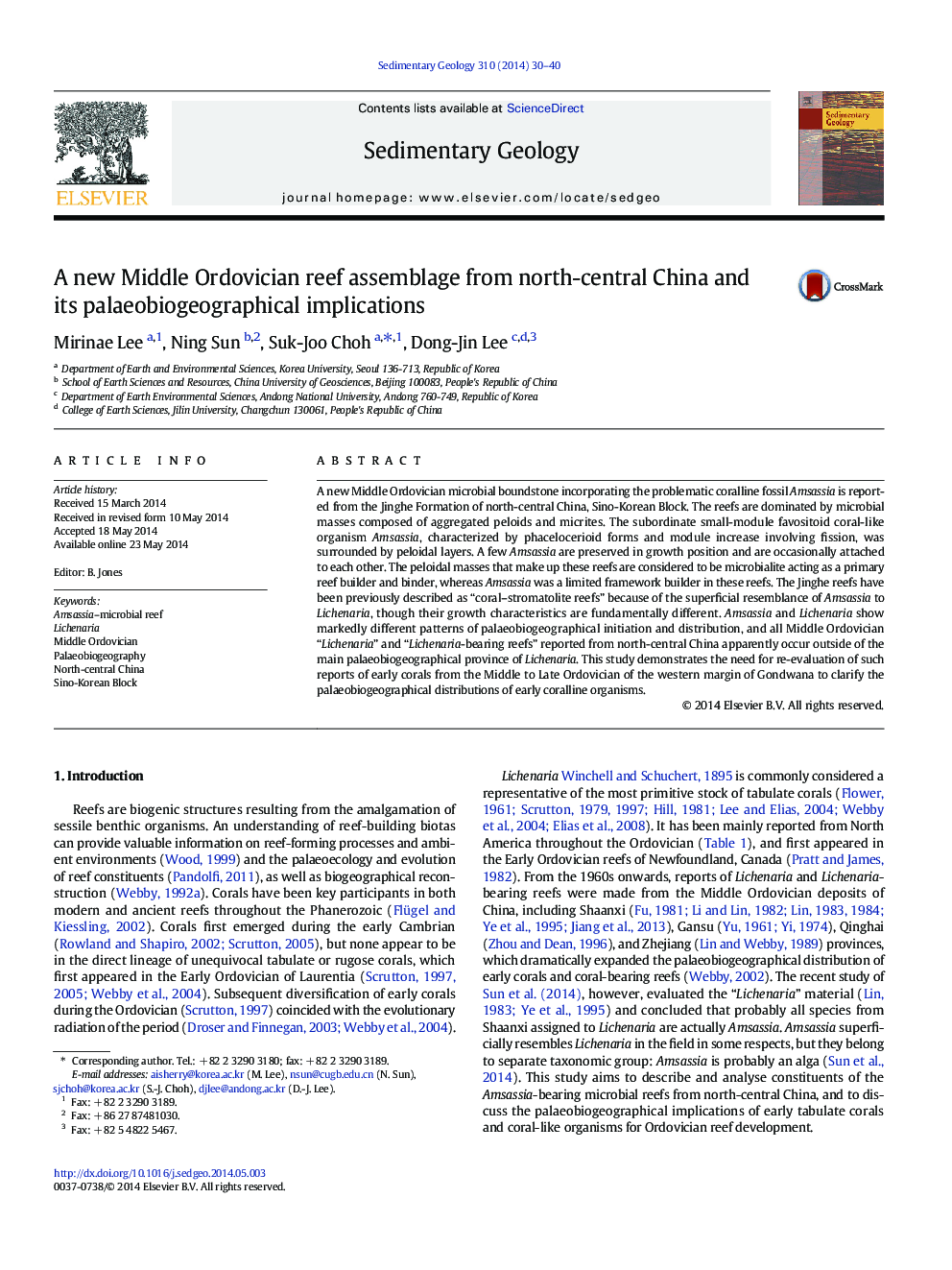| Article ID | Journal | Published Year | Pages | File Type |
|---|---|---|---|---|
| 4689377 | Sedimentary Geology | 2014 | 11 Pages |
•A new Middle Ordovician microbial-coralline fossil Amsassia reef from China.•Aggregated peloids and micrites functiond as frame builder and binder of the reef.•The reefs have been previously misinterpreted as “Lichenaria–stromatolite reefs”.•Amsassia and Lichenaria show markedly different palaeobiogeographical distribution.
A new Middle Ordovician microbial boundstone incorporating the problematic coralline fossil Amsassia is reported from the Jinghe Formation of north-central China, Sino-Korean Block. The reefs are dominated by microbial masses composed of aggregated peloids and micrites. The subordinate small-module favositoid coral-like organism Amsassia, characterized by phacelocerioid forms and module increase involving fission, was surrounded by peloidal layers. A few Amsassia are preserved in growth position and are occasionally attached to each other. The peloidal masses that make up these reefs are considered to be microbialite acting as a primary reef builder and binder, whereas Amsassia was a limited framework builder in these reefs. The Jinghe reefs have been previously described as “coral–stromatolite reefs” because of the superficial resemblance of Amsassia to Lichenaria, though their growth characteristics are fundamentally different. Amsassia and Lichenaria show markedly different patterns of palaeobiogeographical initiation and distribution, and all Middle Ordovician “Lichenaria” and “Lichenaria-bearing reefs” reported from north-central China apparently occur outside of the main palaeobiogeographical province of Lichenaria. This study demonstrates the need for re-evaluation of such reports of early corals from the Middle to Late Ordovician of the western margin of Gondwana to clarify the palaeobiogeographical distributions of early coralline organisms.
